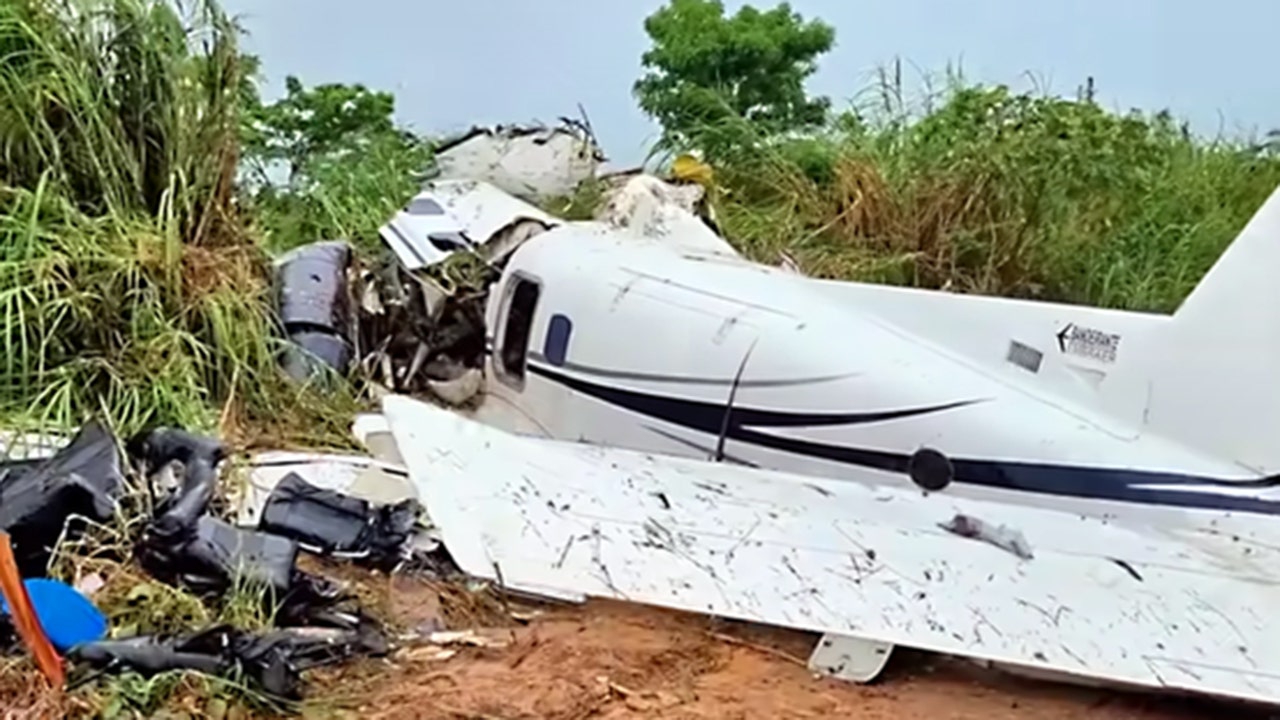History of Plane Crashes in Brazil

Brazil, with its vast geographic expanse and robust air travel network, has unfortunately witnessed a number of significant plane crashes throughout its history. These incidents have not only resulted in tragic loss of life but have also had a profound impact on the nation’s aviation industry and public perception of air travel.
Notable Plane Crashes in Brazil
The following is a timeline of major plane crashes in Brazil, highlighting the causes and consequences of these tragic events.
- 1973: Varig Flight 831 (Rio de Janeiro to Paris): On January 3, 1973, a Boeing 707-320C, operating as Varig Flight 831, crashed into the Atlantic Ocean shortly after takeoff from Rio de Janeiro-Galeão International Airport, killing all 123 people on board. The crash was attributed to a combination of factors, including pilot error and mechanical failure. This incident led to significant changes in aviation safety regulations in Brazil, including stricter pilot training and aircraft maintenance standards.
- 1982: Vasp Flight 168 (São Paulo to Porto Alegre): On October 1, 1982, a Boeing 737-200, operating as Vasp Flight 168, crashed into a residential area in São Paulo, killing all 137 people on board and 3 people on the ground. The crash was attributed to pilot error and a failure to follow proper procedures during takeoff. This incident highlighted the importance of pilot training and the need for rigorous safety protocols.
- 1989: Transbrasil Flight 402 (Rio de Janeiro to São Paulo): On July 20, 1989, a Boeing 727-200, operating as Transbrasil Flight 402, crashed into a mountain near Rio de Janeiro, killing all 137 people on board. The crash was attributed to pilot error and a failure to follow proper procedures during approach. This incident led to the implementation of stricter regulations for flight crew training and the use of flight simulators.
- 2006: Gol Transportes Aéreos Flight 1907 (Manaus to Rio de Janeiro): On September 29, 2006, a Boeing 737-800, operating as Gol Transportes Aéreos Flight 1907, collided in mid-air with a Legacy 600 business jet near the Amazon rainforest. The Boeing 737 crashed, killing all 154 people on board. The Legacy 600 was able to land safely. The crash was attributed to a failure of the air traffic control system and a lack of communication between the two aircraft. This incident led to a major overhaul of Brazil’s air traffic control system and a renewed focus on safety.
- 2014: TAM Airlines Flight 3054 (São Paulo to Porto Alegre): On July 17, 2014, a Boeing 737-800, operating as TAM Airlines Flight 3054, overran the runway during landing at Congonhas Airport in São Paulo and crashed into a hangar, killing all 95 people on board. The crash was attributed to pilot error and a failure to follow proper procedures during landing. This incident led to a review of safety procedures at Congonhas Airport and a renewed focus on pilot training and aircraft maintenance.
Types of Plane Crashes in Brazil: Brazil Plane Crash Type

Brazil plane crash type – Understanding the different types of plane crashes that have occurred in Brazil provides valuable insights into the complexities of aviation safety and the factors that contribute to these tragic events. Analyzing these crashes helps aviation authorities and industry professionals identify trends, implement preventive measures, and enhance safety protocols.
Mid-Air Collisions
Mid-air collisions, while relatively rare, are among the most devastating types of plane crashes. These incidents occur when two or more aircraft collide in flight, often resulting in catastrophic consequences.
In Brazil, mid-air collisions have been attributed to various factors, including:
- Pilot Error: Pilots may fail to maintain proper separation distances or misjudge the position of other aircraft.
- Air Traffic Control Issues: Inadequate communication or coordination between air traffic controllers and pilots can contribute to collisions.
- Weather Conditions: Severe weather, such as thunderstorms or fog, can reduce visibility and make it difficult for pilots to navigate safely.
- Mechanical Failures: In rare cases, mechanical failures, such as engine malfunctions, can lead to loss of control and collisions.
Runway Accidents, Brazil plane crash type
Runway accidents encompass a range of incidents that occur during takeoff, landing, or taxiing operations. These accidents can involve collisions with other aircraft, obstacles, or runway overrun.
Contributing factors to runway accidents in Brazil include:
- Pilot Error: Inadequate pilot training, fatigue, or poor judgment can lead to miscalculations during takeoff or landing.
- Runway Conditions: Slippery surfaces due to rain or snow, or obstacles on the runway, can increase the risk of accidents.
- Communication Failures: Misunderstandings between pilots and air traffic controllers can lead to confusion and collisions.
- Mechanical Failures: Engine failure or brake problems can result in runway overruns or collisions.
Mechanical Failures
Mechanical failures are a significant contributor to plane crashes worldwide, and Brazil is no exception. These failures can range from engine malfunctions to hydraulic system issues, and they can occur at any stage of flight.
Factors contributing to mechanical failures in Brazil include:
- Inadequate Maintenance: Insufficient maintenance schedules or improper repairs can lead to mechanical problems.
- Age of Aircraft: Older aircraft are more prone to mechanical failures due to wear and tear.
- Manufacturing Defects: Rarely, aircraft may have inherent design flaws that can contribute to mechanical failures.
- Environmental Factors: Extreme weather conditions or corrosive environments can accelerate the deterioration of aircraft components.
Factors Contributing to Plane Crashes in Brazil

Brazil, with its vast geographical expanse and burgeoning aviation industry, has unfortunately experienced a number of plane crashes throughout its history. Understanding the contributing factors to these crashes is crucial for improving aviation safety and preventing future tragedies.
Infrastructure Limitations
Infrastructure limitations play a significant role in the occurrence of plane crashes in Brazil. The country’s vast territory and diverse terrain present challenges for maintaining a consistent and robust aviation infrastructure. This includes:
- Limited Runway Length: Many airports in Brazil, particularly those in remote regions, have runways that are too short for larger aircraft, limiting the types of planes that can operate safely. This can lead to situations where aircraft are forced to land at airports that are not suitable for their size, increasing the risk of accidents.
- Inadequate Navigational Aids: Limited availability of modern navigational aids, such as instrument landing systems (ILS) and radar facilities, can make it difficult for pilots to navigate safely in challenging weather conditions. This is especially problematic in areas with mountainous terrain or dense jungle.
- Maintenance and Upkeep: Aging infrastructure, combined with limited funding for maintenance and upkeep, can lead to deterioration of runways, taxiways, and other critical aviation facilities, increasing the risk of accidents.
Air Traffic Control Issues
Air traffic control issues can contribute to plane crashes in Brazil. Factors include:
- Overcrowded Airspace: Brazil’s growing aviation industry has led to increasing air traffic, particularly in major cities. This can put a strain on air traffic control systems, leading to delays, miscommunications, and potential collisions.
- Inadequate Staffing: Shortages of trained air traffic controllers can contribute to delays and errors, increasing the risk of accidents.
- Technological Limitations: Outdated air traffic control systems and technologies can contribute to challenges in managing air traffic effectively.
Pilot Training Standards
Pilot training standards are a critical factor in aviation safety. While Brazil has made strides in improving pilot training, certain challenges remain:
- Varying Quality of Training: The quality of pilot training can vary significantly across different flight schools and training institutions. This can lead to inconsistencies in pilot proficiency and knowledge, increasing the risk of accidents.
- Inadequate Flight Simulator Training: Access to modern flight simulators is essential for pilots to practice emergency procedures and develop critical skills in a safe environment. Limited access to such simulators can impact pilot preparedness.
- Language Barriers: In a country with diverse languages, communication between pilots and air traffic controllers can be a challenge, potentially leading to misunderstandings and errors.
Environmental Factors
Brazil’s diverse geography and climate present unique environmental challenges for aviation.
- Weather Patterns: Tropical storms, heavy rainfall, and thunderstorms can create challenging flying conditions, making it difficult for pilots to maintain control of their aircraft. This is particularly problematic in regions with mountainous terrain, where weather patterns can be unpredictable.
- Terrain: Brazil’s diverse terrain, including mountains, jungles, and coastal areas, can present navigation challenges for pilots, increasing the risk of accidents.
Regulatory Frameworks and Safety Measures
Brazil has implemented various regulatory frameworks and safety measures to improve aviation safety.
- National Civil Aviation Agency (ANAC): ANAC plays a crucial role in regulating and overseeing the aviation industry, including setting safety standards, conducting inspections, and investigating accidents.
- Safety Audits: ANAC conducts regular safety audits of airlines and airports to ensure compliance with safety regulations and identify areas for improvement.
- Accident Investigations: ANAC investigates all aviation accidents to determine their causes and identify areas for improvement in safety protocols and procedures.
The investigation into the Brazil plane crash type has been ongoing for months, with experts meticulously analyzing the wreckage and flight data. While the world waits for answers, the political landscape is also heating up. The abc presidential debate time is approaching, and the candidates are vying for attention as they prepare to face off on national television.
The crash investigation, however, remains a priority, with authorities determined to uncover the truth behind this tragic event.
The investigation into the Brazil plane crash type is a complex process, requiring meticulous analysis of various factors. Understanding the political landscape during the time of the crash can provide valuable context, and the presidential debate dates could potentially shed light on any potential influence on decision-making.
Ultimately, a thorough examination of the Brazil plane crash type will require a comprehensive approach that considers all relevant factors, including the political climate.
